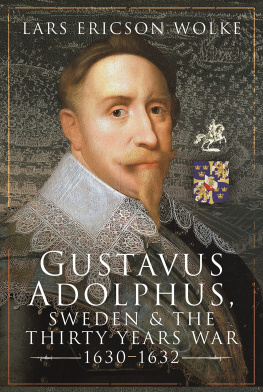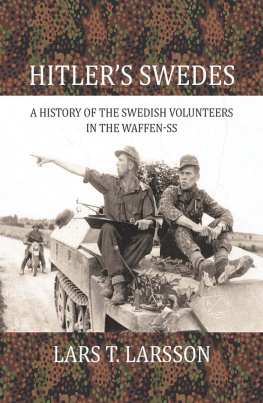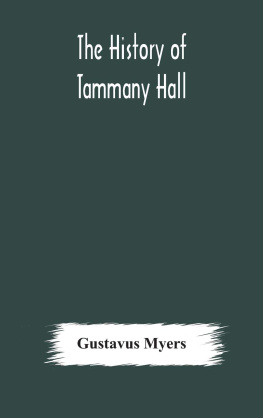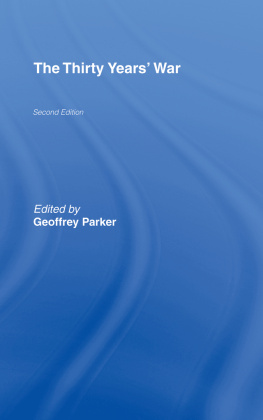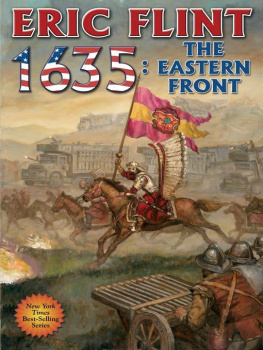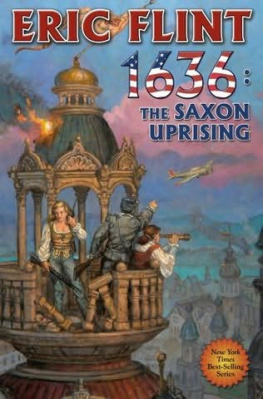Lars Ericson Wolke - Gustavus Adolphus, Sweden and the Thirty Years War, 1630–1632
Here you can read online Lars Ericson Wolke - Gustavus Adolphus, Sweden and the Thirty Years War, 1630–1632 full text of the book (entire story) in english for free. Download pdf and epub, get meaning, cover and reviews about this ebook. year: 2022, publisher: Pen & Sword Military, genre: History. Description of the work, (preface) as well as reviews are available. Best literature library LitArk.com created for fans of good reading and offers a wide selection of genres:
Romance novel
Science fiction
Adventure
Detective
Science
History
Home and family
Prose
Art
Politics
Computer
Non-fiction
Religion
Business
Children
Humor
Choose a favorite category and find really read worthwhile books. Enjoy immersion in the world of imagination, feel the emotions of the characters or learn something new for yourself, make an fascinating discovery.
- Book:Gustavus Adolphus, Sweden and the Thirty Years War, 1630–1632
- Author:
- Publisher:Pen & Sword Military
- Genre:
- Year:2022
- Rating:5 / 5
- Favourites:Add to favourites
- Your mark:
- 100
- 1
- 2
- 3
- 4
- 5
Gustavus Adolphus, Sweden and the Thirty Years War, 1630–1632: summary, description and annotation
We offer to read an annotation, description, summary or preface (depends on what the author of the book "Gustavus Adolphus, Sweden and the Thirty Years War, 1630–1632" wrote himself). If you haven't found the necessary information about the book — write in the comments, we will try to find it.
Gustavus Adolphus, Sweden and the Thirty Years War, 1630–1632 — read online for free the complete book (whole text) full work
Below is the text of the book, divided by pages. System saving the place of the last page read, allows you to conveniently read the book "Gustavus Adolphus, Sweden and the Thirty Years War, 1630–1632" online for free, without having to search again every time where you left off. Put a bookmark, and you can go to the page where you finished reading at any time.
Font size:
Interval:
Bookmark:
Gustavus Adolphus,
Sweden and the
Thirty Years War,
16301632
Gustavus Adolphus,
Sweden and the
Thirty Years War,
16301632
Lars Ericson Wolke

First published in Great Britain in 2022 by
PEN & SWORD MILITARY
an imprint of Pen & Sword Books Ltd
Yorkshire Philadelphia
Copyright Lars Ericson Wolke, 2022
ISBN 978-1-52674-959-8
The right of Lars Ericson Wolke to be identified as the author of this work has been asserted by him in accordance with the Copyright, Designs and Patents Act 1988.
A CIP catalogue record for this book is available from the British Library.
All rights reserved. No part of this book may be reproduced or transmitted in any form or by any means, electronic or mechanical including photocopying, recording or by any information storage and retrieval system, without permission from the Publisher in writing.
Pen & Sword Books Ltd incorporates the Imprints of Aviation, Atlas, Family History, Fiction, Maritime, Military, Discovery, Politics, History, Archaeology, Select, Wharncliffe Local History, Wharncliffe True Crime, Military Classics, Wharncliffe Transport, Leo Cooper, The Praetorian Press, Remember When, White Owl, Seaforth Publishing and Frontline Books.
For a complete list of Pen & Sword titles please contact
PEN & SWORD BOOKS LTD
47 Church Street, Barnsley, South Yorkshire, S70 2AS, England
E-mail: enquiries@pen-and-sword.co.uk
Website: www.pen-and-sword.co.uk
or
PEN & SWORD BOOKS
1950 Lawrence Rd, Havertown, PA 19083, USA
E-mail: uspen-and-sword@casematepublishers.com
Website: www.penandswordbooks.com
Axel Oxenstierna. Painting copied from the original by Michiel van Mierevelt, 1635. Nationalmuseum, Stockholm.
The tomb of Torsten Stlhandske and his wife Kristina Horn, bo (Turku) cathedral.
Johan Adler Salvius. Painted by unknown artist, 1640s. Private collection.
Swedish and Dutch ships at the entrance to Pillau (Baltijsk) in Prussia.
Watercolour illustration on a map at the Military Archives, Stockholm.
Gustavus Adolphus at Ltzen, November 1632. Painting by Jan Asselijn, 1635. Gemldegalerie, Berlin.
The enlistment of soldiers in Finland. Sketch in Aarno Karimos book, Kumpujen yst (192932)
The siege of Stralsund, 12 May 1628. Contemporary flyer.
The Swedish army storming Frankfurt an der Oder, 1631. By Matthus Merian.
The Swedish army camp at Werben an der Elbe, 1631. Contemporary picture.
The Swedish logistical train at the battle of Leipzig, 1642 (second battle of Breitenfeld). Contemporary picture.
The Swedish fortress of Gustavsburg at Mainz. By Matthus Merian.
The Swedish army crosses the Rhine to meet Spanish forces at Kreuznach, 1631. By Matthus Merian in Theatrum Europaeum, 1679.
Gustavus Adolphus death at Ltzen, November 1632. Painting by Carl Wahlbom, 1855. Nationalmuseum, Stockholm.
A Swedish stamp of 1932, 300 years after the battle of Ltzen.
A traditional Gustavus Adolphus pastry, served on Ltzen Day, 6 November, each year. Picture from 2010.
The tomb of Gustavus Adolphus in Riddarholms church, Stockholm.
A statue of Gustavus Adolphus by Pierre Hubert LArcheveque and Johan Tobias Sergel, raised in Stockholm in 1796. Standing beneath the king is Axel Oxenstierna, giving instructions to the Muse Clio about how to describe the kings history.
The first time I visited the battlefield at Ltzen in Saxony-Anhalt, Germany, was in November 1994, a year when the memorial activities concerning the battle of 1632 coincided with the 400th anniversary of the birth of Gustavus Adolphus in December 1594. As in every year, there were evangelical services (both in Ltzen and Weissenfels), wreaths were laid at memorial sites and other memorial activities took place. In one of the buildings at the site we (a number of Swedish historians and museum employees organised by the Royal Armoury in Stockholm) had constructed a small exhibition, under the kind and scholarly supervision of the late Swedish historian Lennart Limberg. He was for many years the representative of the Ltzen Foundation (Ltzenfonden), which had been formed in 1931 with the mission of preserving the memorial site at Ltzen. The foundation was part of the National Association for the Preservation of Swedishness Abroad (Riksfreningen Sverigekontakt). This was founded in 1908, in the wake of large-scale emigration from Sweden to North America, with the purpose of maintaining Swedish language and culture among emigrants and among Swedish-speaking minorities in Finland and Estonia. Today, among other things, the association works to support Swedish teaching in several countries, including Germany.
The Ltzen Foundation constructed some buildings on the battlefield. As early as 1931 a caretakers house had been built there in the style of a typical house in the Swedish province of Dalarna, and in 1982 the first museum was installed there. So this small patch of land close to where the battle was fought became Swedish property, and Swedish ownership was retained during the rule of the Third Reich and the GDR (East Germany), from 1933 to 1990.
The work of the National Association for the Preservation of Swedishness Abroad is focused on the preservation of and education in the Swedish language outside Sweden, and the Ltzen Museum is the only Swedish battlefield that is part of their area of responsibility. There are lots of other landmarks with Swedish connections (such as the Dala horse monuments in the USA and Swedish-themed cafes all over the world), but there are few sites linked to the Thirty Years War. However, there are memorials of different kinds at, for instance, Oppenheim (commemorating a battle between Swedes and Spaniards), Koblenz (commemorating a battle between the combined Imperial forces and the forces of the city of Koblenz, and a Swedish fleet on Lake Constance in 1633), Mhlheim an der Danube (a Swedish mass grave) and Osnabrck (where the 1648 Peace of Westphalia treaty was signed).
The site of Ltzen is unique, and it illustrates the important role Gustavus Adolphus continues to play in Swedish history. Although he is no longer regarded as the saviour of evangelical belief and as a national hero, the historical significance of his career and the importance of Swedish warfare during Swedens era of greatness remain. The Ltzen battle memorial site not only tells the story of the battle but also gives the visitor important insights into Gustavus Adolphus and the role he played for two-and-a-half years during the Thirty Years War, which shattered Europe and especially Germany between 1618 and 1648.
In using quoted matter I have made minor adjustments to the language to make it easier for modern readers to understand. When it comes to place names I use the seventeenth-century versions, which is common practice in the scholarly literature, although when a name is used for the first time I also give the modern name (if the two versions differ) within parentheses, and if there is one, I have used the modern English name.
Lars Ericson Wolke
Stockholm, summer 2021
1555 The Peace of Augsburg is signed in an attempt to ease hostilities between Catholics and Protestants in Europe.
1609 A ceasefire ends the fifty-year-long rebellion of the Protestant Netherlands against their Spanish rulers.
1609 A League of German Catholic princes is formed, under the leadership of the Prince-Elector of Bavaria. The League is, of course, anti-Protestant, but also hopes to limit the power of the Catholic Emperor in Vienna.
Next pageFont size:
Interval:
Bookmark:
Similar books «Gustavus Adolphus, Sweden and the Thirty Years War, 1630–1632»
Look at similar books to Gustavus Adolphus, Sweden and the Thirty Years War, 1630–1632. We have selected literature similar in name and meaning in the hope of providing readers with more options to find new, interesting, not yet read works.
Discussion, reviews of the book Gustavus Adolphus, Sweden and the Thirty Years War, 1630–1632 and just readers' own opinions. Leave your comments, write what you think about the work, its meaning or the main characters. Specify what exactly you liked and what you didn't like, and why you think so.

